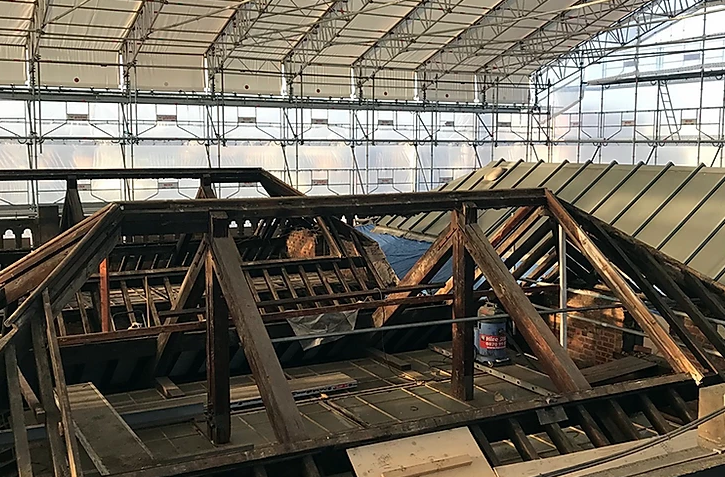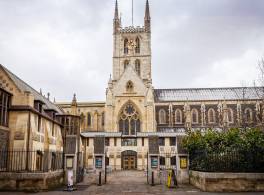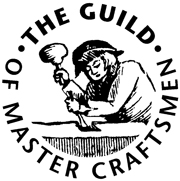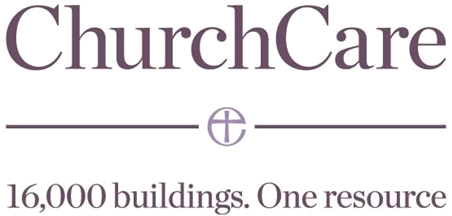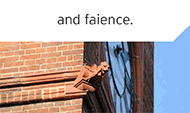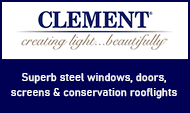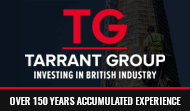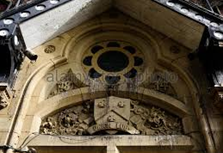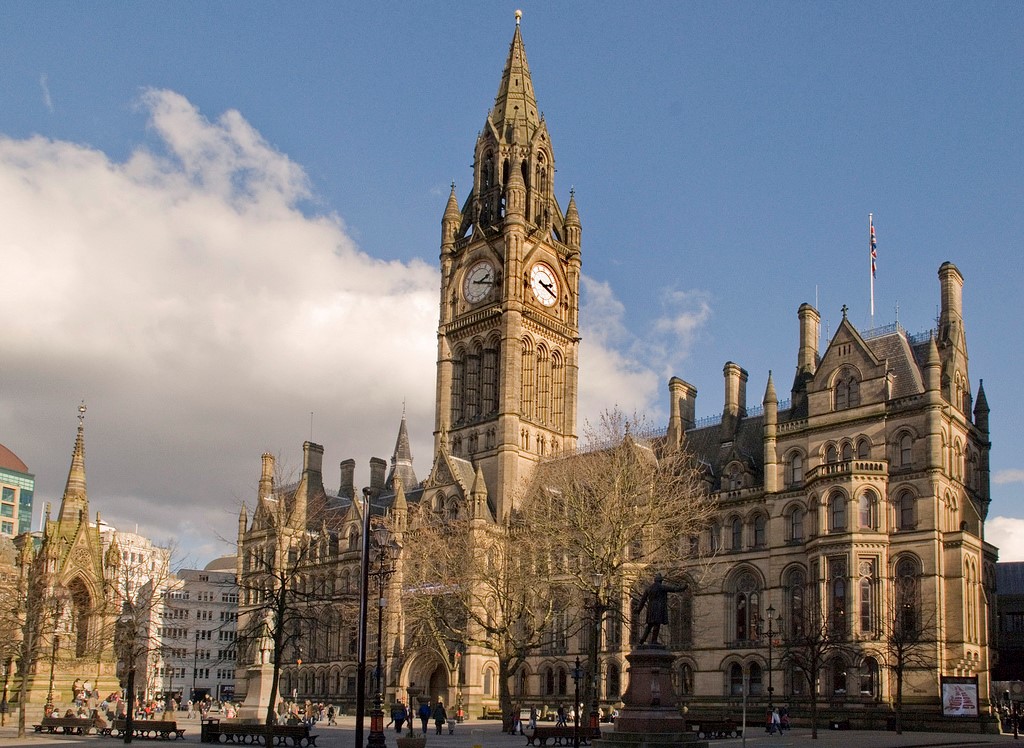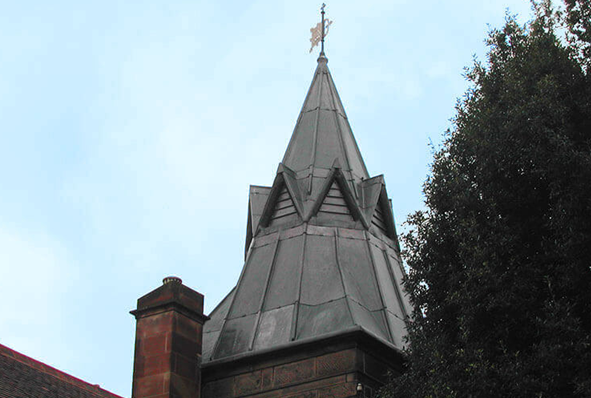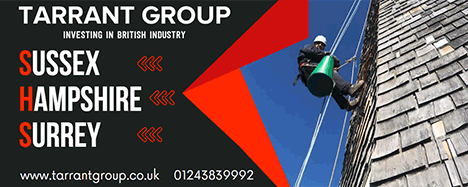Heritage Roofing
Heritage roofing - maintaining our iconic buildings
The UK is home to some of the most iconic buildings in the world, from stunning churches and cathedrals to historic stately homes. Each and every one of these remarkable feats of architecture requires regular maintenance to ensure they remain in the very best condition, allowing them to be enjoyed for generations.
Cathedral Care
Restoration and upkeep of cathedrals
There are some 42 Anglican cathedrals in the UK, not to mention 20 or so Catholic cathedrals. Cathedrals form the most important collection of historic buildings in England. The largest and most ancient are internationally famous, the smallest are usually among the most significant buildings in their region and even the most recent are architectural masterpieces.
Master Craftsmen
Championing our heritage with modern craftsmanship
Twenty years ago, English Heritage (now Historic England) published its first-ever Register of Buildings at Risk across England, which featured nearly 2,000 buildings and monuments that were ‘neglected, broken and unloved’. Recently Historic England was delighted to announce that over two-thirds of those buildings were now safe, in both urban and rural areas right across the country.
Lightning Protection
When lightning strikes are you protected against this act of God?
The issue of lightning protection in churches is one that has exercised this publication for many years. In this four-part series of spotlights on the issue we will be revisiting various aspects of the subject, beginning with an overview of current thinking.
Traditional Lime
Lime: it’s better for buildings – and for the environment
It is now fairly well known that cement is not good for old buildings and that lime mortar should be used. But why? What are the advantages and what are the disadvantages? In order to begin to answer those questions it is necessary to understand the nature of traditional building, the process by which buildings used to be built, and how it differs from modern construction, the process by which we build today.
Audio Visual
Audio visual equipment in church buildings
This guidance is issued by the Church Buildings Council under section 55(1)(d) of the Dioceses, Mission and Pastoral Measure 2007. As it is statutory guidance, it must be considered with great care. The standards of good practice set out in the guidance should not be departed from unless the departure is justified by reasons that are spelled out clearly, logically and convincingly.
Read More...
CRE Events
All change at CRE: the UK’s ‘ideal church show’
The Christian Resources Exhibition (CRE), the UK’s largest church-related show, has changed hands in its 40th year and has been taken over by Quartz Business Media.
Insurance
You need to ensure that reasonable precautions are in place at your church to keep it safe for those who use it. To do this, you need to think about what might cause harm to people.
You will then need to decide if the precautions already in place are adequate. If they are not, you may need to identify further action to prevent any danger. When done formally, this is known as a risk assessment.
LPOW Grants
£23 million government package to support restoration of thousands of listed places of worship
Heritage Minister Sir Chris Bryant has announced that the Listed Places of Worship Grant Scheme will be extended into the next financial year, providing £23 million so that thousands of historical buildings, including churches, synagogues, mosques and temples, can carry out restoration work.
Church Maintenance
Church maintenance and repair: Calendar of Care
Just as prevention is always better than cure, maintenance is preferable to major repairs. But, such repairs may not always be avoidable. Church Care offers a monthly guide in our coming issues Starting in Spring
We can help you understand the common problems and areas that need your special attention, and give you tips for regular maintenance schemes.
Pest Control
Michael Palin warns of pest threat to churches
Michael Palin is supporting the future of the UK’s historic churches and chapels with a voiceover for a new animated film. The 80 second animation, produced for the National Churches Trust, highlights why churches are some of the nation’s best loved buildings.
Town Halls
The history of the great Victorian Town Halls of Northern England
From industrial squalor to civic pride, the story behind some of the most impressive buildings of the North involve a unique mix of economics, grand designs and noble sentiments within communities.
Lead Roofing
Lead is one of the oldest materials in the roofing industry and is still commonly used throughout the world today.
Lead roofing is a traditional roofing method which has been used in the industry for hundreds of years, and is therefore proven to be extremely reliable. Lead roofing, and sand-cast lead, in particular is ideal for old buildings such as churches or historical renovations, whereas milled lead roofing is a mass-produced alternative, used for precision and accuracy in homes and commercial buildings alike.
SEARCH OUR DIRECTORY
A Brief History of Zinc and Copper Roofing
Zinc
The ancient Babylonians and Assyrians used zinc as part of the alloying process to produce brass but it was in the 13 th century that India first obtained metallic zinc through smelting. The process was passed on to China where zinc coins were produced during the Ming Dynasty. It was not recognised as a separate metal in Europe until 1546.
The metal did not even have a universally accepted name at this time, being known as tutanego, Indian tin, calamine or spiauter. The term "zink" was first used around 1536 from the German word "zinke" meaning sharp point which described the shape of the metal deposits in the furnace.
By 1720 zinc was being produced in industrial quantities in Swansea using imported oriental methods. In 1743 William Champion built the first European zinc smelter in Bristol producing 200 tonnes of zinc a year. While zinc casting was common, in 1805 it was discovered that the metal could be rolled at temperatures of 100o to 150o C to produce zinc sheeting.
Zinc is mined, mostly underground, in more than 50 countries, with Australia, Canada, China, Peru and the U.S.A. the leading producers. The ore contains many impurities and goes through a concentration process before smelting.
The main use of rolled zinc sheet and strip is for roofing, cladding, flashings, rainwater goods and historically, even to imitate ornamental stone carvings. It has been used extensively for these purposes in continental Europe since the 19th century but now, with increased awareness of its technical and aesthetic qualities, its use is rapidly increasing in the UK.
Today's zinc is a zinc-copper-titanium alloy. It has an excellent visual appearance, long life with minimal maintenance, and a cost-effectiveness and versatility which enables it to be used for innovative architectural designs.
Copper
Copper was known to many of the world's oldest civilizations and has been in use for at least 10,000 years. In Roman times it was mined in Cyprus, giving rise to the metal's name of Cyprium, later shortened to Cuprum and eventually Anglicised into English as copper.
Today most copper is produced from open cast mines on all five continents. The copper is extracted from vast quantities of ore, mainly copper sulphides, by smelting, before being refined by electrolysis in huge tank houses. In the early 18th century about 90% of the world's copper was smelted in South Wales.
Copper has been used as a waterproof roofing material since ancient times and can be recognised by the greenish roofs and domes on today's buildings. This colouring is the reaction of air with copper which creates an additional protection against corrosion. Firstly copper oxide forms, followed by cuprous and cupric sulphide then subsequently the green layer of copper carbonate, called verdigris or patina.
Copper is rolled to thicknesses ranging from 0.5 to 1.0mm, but 0.6 to 0.7mm thickness is usually used for roofing. It can be worked at any temperature and does not become brittle in cold weather. It is available in sheets or strips and is generally regarded as a lightweight covering requiring a substrate such as boarding.
Today, tried and tested fixing details and techniques make copper the ideal trouble-free building material for roofing, cladding, flashings, gutters, downpipes and other architectural details. Advances in prefabrication techniques and machinery and fixing technology have greatly reduced costs, which enables copper to be used in a greater variety of building situations than in the past.
Copper roofs have been known to last for over 700 years, the substrate rather than the copper itself eventually failing.
Courtesy of Peters Roofing www.petersroofing.co.uk.












